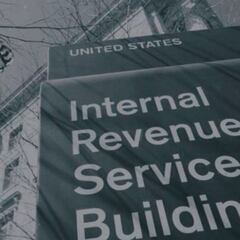What does Biden's $2.3 trillion infrastructure plan include?
President Biden has an ambitious plan to revolutionise America's infrastructure, both physical and social, to prepare the country for the future.

On March 31st, the White House released a proposal for new legislation to shape the United States’ economic recovery after the covid-19 pandemic, called the American Jobs Plan. When making the announcement, the White House boasted that the plan would be a much-needed “investment in America that will create millions of good jobs, rebuild our country’s infrastructure, and position the United States to out-compete China.” Various organizations, including the Society of American Civil Engineers, have long reported that US infrastructure was in serious need of investment and some policymakers fear that if the investment does not come, the nation’s crumbling roads could be a barrier to economic recovery.
What is in the Biden infrastructure plan?
The proposal takes a broad definition of “infrastructure” and even includes language on improvements to “social infrastructure,” which has received objections from Republicans. President Biden argues that in the same way that roads and highways have been neglected, so have workers in the US and that investments in both are needed to help power the economy forward.
While both Democrats and Republicans advocate for investments in infrastructure, Biden’s two trillion dollar proposal has received criticism from the Republicans who see the bill as unfocused and an overreach.
Republican leaders have come out strongly against aspects of the proposal that are not focused on physical infrastructure like improvements to roads and bridges. But, recent polling has shown that there is widespread support from across the political spectrum for these elements of the legislation. When Data for Progress, a progressive think tank, polled voters and asked if they supported or opposed these additional an investments like “400 billion for the care economy such as investing in long term care for seniors and people with disabilities”, 64% of Republicans responded that they either strongly or somewhat support the proposal. As the proposal continues to be socialized these numbers could move.
After a meeting hosted by the White House on Monday with leading Democrats and Republicans, some Republicans stated that they are still willing to negotiate a more “traditional infrastructure bill” but are uneasy to work with President Biden on his broader proposal. Additionally, President Biden has proposed to pay for the plan, in part, by increasing the corporate tax rate, which many Republicans are opposed to after it was lowered under the Trump administration.
To understand the political debate surrounding the American Jobs Plan and the economic and social impacts such a sweeping proposal could have, it is important to understand four central aspects of the plan.
First, fixing what exists
The American Jobs Plan would invest 621 billion dollars in improving American roads and bridges, modernizing public transit systems, expanding and establishing a reliable passenger and freight rail system, and more. These investments would help to make businesses in the US more competitive and help to attract more investment.
Additionally, the proposal states that “One in five miles, or 173,000 total miles, of our highways and major roads are in poor condition, as well as 45,000 bridges.” These roads and bridges, many of which are found in rural areas are critical lifelines to those communities and would be targeted under the plan.
These measures are popular on both sides of the aisle, but because they are attached to a more robust proposal, it may not be enough to garner support from Republicans.
- Where can I cash my payment?
- Fourth stimulus check: what has Biden said and proposed?
- Third stimulus check: who is getting extra money, why and how much?
- Would the fourth stimulus check be taxed by the IRS?
Second, building a climate-resilient infrastructure and making US industry competitive
In the last few years, the United States has experienced some of the harshest natural disasters ever recorded. Flooding from torrential rains and hurricanes, wildfires, and unprecedented ice storms have taken their toll on the country’s infrastructure. While infrastructure itself cannot prevent these sorts of disasters, it can be built to withstand more extreme weather. The plan would set aside 100 billion dollars to update the US energy grid, making it less susceptible to outages during extreme weather events, which are only becoming more frequent. See the incident this winter in Texas as an example of what Biden wants to avoid.
Also, the proposal allocates billions to research, develop and invest in emerging technologies such as carbon capture, biofuels, and offshore wind energy, and vehicle electrification to reduce emissions and make the US more competitive within the renewable energy sector. The focus on electric vehicles and ensuring that US companies are competitive in this market in the 21st century is a key component of the plan. The Biden administration hopes to give the American auto sector an advantage by investing in battery creation, charging infrastructure, and incentivizing the transition of major fleets used in public transport or mail distribution to electric options. The plan does not ignore the real barriers to the uptake of electric vehicles in the United States, one being the lack of charging stations. The plan would address this issue by establishing “grant and incentive programs for state and local governments and the private sector to build a national network of 500,000 EV chargers by 2030”.
Three, ensuring access to adequate housing and clean water
In response to water crises, such as the one that occurred in Flint, Michigan, the American Jobs Plan would make much-needed investments into pipes and waterways that connect US households to drinking water. Studies have shown that more than half a million children in the US have elevated lead levels in their bloodstream. President Biden’s plan would replace 100 percent of lead piping, decreasing the adverse health outcomes caused by this aging infrastructure. Lead, even at low levels, has been shown to be harmful to health and in particular to children, causing, per the Environmental Protection Agency, “damage to the central and peripheral nervous system, learning disabilities, shorter stature, impaired hearing, and impaired formation and function of blood cells.”
As for investments in public housing, the White House stated that at least 40 billion dollars should be invested “to improve the infrastructure of the public housing system in America. This funding will address critical life-safety concerns, mitigate imminent hazards to residents, and undertake energy efficiency measures which will significantly reduce ongoing operating expenses.”
Some Democrats, including many who represent New York City have stated that their city alone could use 40 billion dollars and Representative Ritchie Torres (NY-15) has recommended that the figure be pushed to 70 million.
Republicans, however, have a different vision for decreasing poverty and homelessness in the United States. In an interview with Politico Senator Pat Toomey of Pennsylvania made his position clear, saying that “When it comes to housing in America, government is the problem, not the solution.”
Lastly, writing the wrongs of past policy
One of the overarching messages that can be found throughout the proposal is the idea of supporting minorities and communities who were left out of previous legislation. When the highway system was developed in the United States, many poor communities were sacrificed and spliced. To avoid this sort of issue being repeated, the proposal suggests that 20 billion dollars be allocated “for a new program that will reconnect neighborhoods cut off by historic investments and ensure new projects increase opportunity, advance racial equity and environmental justice, and promote affordable access”.
The White House argues that the conditions of those who work within the care economy are unacceptable and highlighted that “Caregivers – who are disproportionally women of color – have been underpaid and undervalued for far too long. Wages for essential home care workers are approximately $12 per hour, putting them among the lowest-paid workers in our economy. In fact, one in six workers in this sector live in poverty.” Protections for workers in this sector have been left out of other labor reform efforts and to help put these workers and those who depend on their care, President Biden hopes to allocate 400 billion dollars for programs to improve the wages and working conditions for those who provide care to those who are ill, children, elderly, or disabled.
What's next for Biden's infrastructure plan
While the fate of this ambitious proposal is uncertain, the meetings and comments made by Republicans early this week show that it will be an uphill climb for President Biden and Washington Democrats to find support from across the aisle. However, with Democrats at the helm in both houses of congress, a critical task will also be negotiating within the party to see what elements the final bill contains.
As to timing, Biden has asked for “significant progress” by Memorial Day (31 May). House Speaker Nancy Pelosi has set out a timeline with the aim of getting something passed by July 4. Whether that is just too ambitious remains to be seen, but it is clear this is one of the Biden administration’s major priorities.
Tagged in:
- Joseph Biden
- Housing infrastructures
- Infrastructures policy
- Covid-19 economic crisis
- Science
- Coronavirus Covid-19
- Economic crisis
- Pandemic
- Coronavirus
- Recession
- Home
- Economic climate
- Virology
- Outbreak
- Infectious diseases
- Urban infrastructures
- Microbiology
- Diseases
- Public works
- Medicine
- Economy
- Urbanism
- Biology
- Health
- Life sciences

